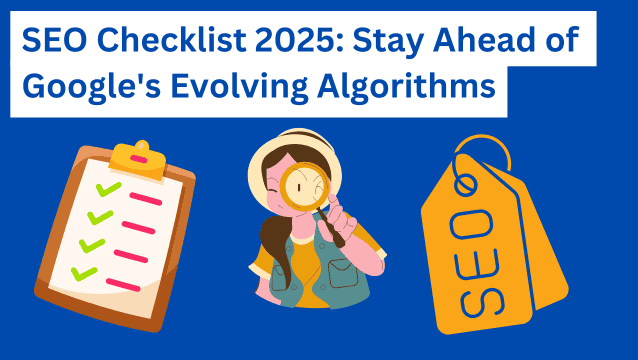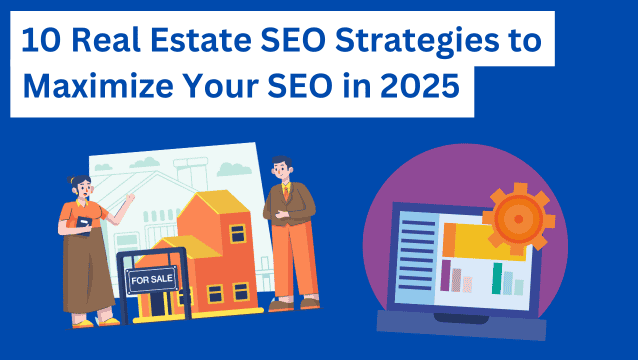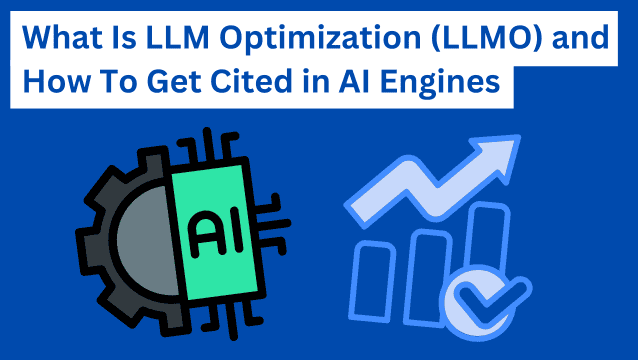For marketers and writers alike, knowing the crux of Google’s E-A-T is like having the keys to a vault. Imagine this vault to be filled with secrets of SEO success — it has everything you need to make your content stand out in terms of quality and improve your credibility.
But, because there have been considerable updates to Google’s core algorithms in the past few years, it’s become a little difficult to understand all you need to know about E-A-T. So, let’s go ahead and crush all your E-A-T-related doubts and understand the need-to-knows about the topic!
What is E-A-T?
E-A-T, also known as E-E-A-T, is a set of rules defined by Google that define the ranking factors Google considers. What does it stand for? Expertise, Authoritativeness, and Trustworthiness, whereas E-E-A-T stands for Experience, Expertise, Authoritativeness, and Trustworthiness.
Here’s what each of these things means:
Experience
This considers the experience of the person writing the piece. For example, suppose the creator who published the piece is a subject matter expert (SME) on the topic and has tried/tested a product/service before discussing it. In that case, they’re considered “experienced” on the topic.
Take the Zapier blog as an example. They usually write first-person content that shows the person’s experience working with a product/service.
Expertise
This factor considers the expertise of the person writing the piece (or the expertise of a website as a whole). For example, if a company like Adobe publishes blogs on PDF management or Niel Patel writes about SEO-related topics, they’ll be considered experts in the field.
For a real-life example, let’s consider this article on JWT tokens — from the algorithm’s perspective, it sees the content written by Dan Moore, a senior software developer with 20+ years of industry experience and mentions in multiple software publications — so it considers that as expertise.
Authoritativeness
This element considers if you have authority over a particular topic to write about it. For this, Google considers your domain authority as well as the topics your website usually covers. For example, since most people refer to the HubSpot blog to learn about marketing topics, it’s considered an authority within its niche.
You can also look at the uSERP’s blog as an example. Most SEO folks visit our blog, mainly because we always talk about SEO-related topics.
Trustworthiness
This factor considers whether the website where the content is hosted is spammy or not. Other than that, it also considers if the content is well-written. For example, think of questions like whether it stuffs keywords, delivers on the search intent, provides accurate information, etc.
What does YMYL have to do with all of it?
If you’ve researched E-A-T, another buzzword you might’ve encountered is Your Money, Your Life (YMYL). So, here’s the correlation between the two:
Remember how we spoke about experience and expertise being important factors for ranking based on Google’s E-A-T?
Well, the YMYL rule states that any information impacting a person’s life, finance, health, or safety, or any search queries that come under the domain of these topics, have to be written by experts in the field.
For example, a financial advisor must write or review information about taxes. Or, information about medications to take has to be written or reviewed by a medical advisor.
Consider the Healthline blog as an example. Almost every topic they cover is reviewed by medical professionals to ensure no information is inaccurate (they also employ writers who have trusted authority in the health niche).
However, someone who has first-hand experience dealing with it can write on topics that go beyond the domain of life, finance, health, or safety. For example, a topic like “best places to shop” can be written by someone who likes shopping. It doesn’t necessarily have to be written by a fashion expert.
Here’s a chart that explains a little more about YMYL and non-YMYL topics:
A brief history of the E-A-T’s core updates
Google started focusing on its content quality in 2015 with its Quality Update (this was also dubbed as Panda Update). This was also the year when the company published its first-ever Search Quality Evaluator Guidelines.
Then, the Medic Update in 2018 focused on ranking factors for the health and wellness industries. Once that was done, another broad core search algorithm update came in 2019 and then again in 2020, both of which aligned with the principles of E-A-T.
Since then, Google has constantly updated its webmaster guidelines and done multiple core search algorithm updates in 2021, 2022, and 2023.
Google has also said with its recent set of updates that it’ll look at punishing content written by bots (especially in the age of technologies like ChatGPT) and promoting content written by humans.
You can also visit Moz’s Google Algorithm Update History to learn about all updates made by Google from the start up until now.
Why is E-A-T important?
It might seem like Google’s E-A-T guidelines are asking for too much (and maybe they are). But these guidelines ultimately benefit the end reader, and since we’re all browsing the internet to research topics, these guidelines ensure we all get more relevant results.
So, let’s look at some of the benefits this guideline offers:
- If you adhere to it, Google rewards and pushes your content in front of more people.
- You also end up writing less spammy and more informational content, and it comes directly from the experts’ mouths.
- YMYL topics get the attention and expertise they deserve.
- You gain a competitive advantage by adhering to these guidelines.
- You increase your domain ratings and build brand authority because Google’s algorithm now perceives you as a trusted website in the niche in which you operate.
- You improve SERP (search engine results page) rankings.
- You create search-relevant content that’s structured based on user intent (this also means you get increased user engagement on your end).
How can you use it to improve content quality?
Here are ten tried-and-true methodologies for writing some of the best content on the internet.
1. Update your content
If most of the topics you cover aren’t evergreen, you should keep a close eye on them (especially if they fall within the domain of YMYL topics) to update them regularly. If your blog is filled with outdated information, it can severely mess up your trustworthiness.
Consider the PandaDoc blog as an inspiration to show Google (and your readers) that you update your content periodically to ensure it has relevant information.
2. Build high-authority backlinks
Since E-A-T guidelines account for links and mentions by a huge margin, it makes sense to invest in backlinking opportunities. You can get backlinks through:
- Link partnerships
- Employing a link-building agency
- Becoming a contributor (either as a writer or a source) for different publications within your niche.
3. Partner with the right people
Partnering with the experts in your field allows you to not only get brownie points because of E-A-T, but you also end up getting qualitative information from them that can be of good use to your end reader.
You can consider partnering with expert writers/subject matter experts for guest-posting opportunities (consider the information Forbes publishes as an example), or you can partner with SMEs to interview them or to get their insights on a particular topic.
4. Build your personal brand
Another thing you can try is building your personal brand. A few ways you can do this are by:
- Creating social profiles on multiple platforms so you can be found easily
- Speaking about a topic of interest on these social platforms
- Contributing as an expert to topics of your interest
- Showing your skills/value to an audience so they can amplify your thoughts further
Alternatively, you can also partner with experts and influencers who’ve already built their personal brand and leverage their authority to your advantage.
5. Display your credentials
To build your authority, display your credentials on your website (these can be brand mentions, awards, results, testimonials, brand partnerships, etc.).
Another way you can showcase your credentials is by guest-posting on a blog or two and writing about your credentials on your bylines. For example, consider this byline on the uSERP’s blog.
Or, you can even use your social media profiles to your advantage to display your credentials there. For example, look at Jeremy Moser’s LinkedIn profile for inspiration.
And if you’re a brand that offers a product or subscription service, you can consider using user reviews and product ratings to your advantage, too. Another idea to consider is building Wikipedia pages of your brand name to improve your trustworthiness.
6. Perform content audits
If you have multiple redirects on your website, a bunch of broken links, poorly written or ill-formatted content, or if your tonality and research topics aren’t right, all of this can eventually contribute to losing out on your brand authority.
That’s why you should do regular content audits to ensure the content you’ve posted still looks great (and relevant), the links you’ve added aren’t broken, and your website doesn’t take excessive time to load.
Software like Semrush can greatly help manage tasks like content and website audits.
7. Be consistent
Just like everything else in life, consistency is key while publishing content, too. Being consistent shows the algorithm that you’re a brand that’s seriously invested in its content and can be trusted.
Aside from that, Google also pushes brands that are consistent to have higher visibility.
Just look at any popular magazines or publications you know — Shopify, Wall Street Journal, ScreenRant, etc. They all might speak of different topics, but if there’s one commonality between all, they post consistent content.
8. Focus on important topics
By focusing on “important” topics, we mean focusing on topics that allow you to demonstrate your expertise, show your perspective(s), and can be qualified as “high-quality content.”
Use the Animalz blog as an example. They might not focus solely on keywords to get noticed by the algorithm. Still, they always write about interesting topics and infuse their unique perspectives, which allows them to regularly rank on the first pages of the SERP.
9. Research user intent
Researching user intent allows you to understand their perspectives, which will help you identify better content topics and write better content.
Another thing it’ll help you with is making sure the content you produce always delivers in terms of relevance and accuracy, which again helps you build the trustworthiness of your brand.
10. Use checklists
Finally, if you’ve gone through the whole nine yards (in this case, the whole nine steps), then the next step is to use a checklist with E-A-T guidelines to your advantage.
Thankfully, Aleyda Solis has already created a checklist (find it here) that considers factors like page experience, expertise, quality, helpfulness, people satisfaction, etc. So it’s pretty well-rounded in terms of matching Google’s E-A-T guidelines, and you can just tick the boxes as you go along.
How to evaluate E-A-T?
To evaluate E-A-T, check if you’re golden in all these categories:
- Content quality and website performance (do an internal website)
- Brand perception and mentions (do an external audit)
- Partnerships (partnerships with experts, partnerships for links, partnerships with brands offering guest posts, etc.)
- Consistency (do you maintain a regular cadence?)
- Traffic, user engagement, and rankings (use Google Search Console)
- Accessibility (confirm if your website adheres to the W3C Accessibility Standards)
Improve your SEO game with uSERP
Sometimes, folks complicate SEO more than it needs to be. And sometimes, they oversimplify it more than it is.
The truth is SEO is neither simple nor easy. But it is constantly evolving, so you always need to be on top of it to ensure you’re still playing on a level field with other veterans in the industry.
Thankfully, in the digital era, acquiring information about SEO updates (and all things SEO-related) is not so difficult. All you need to do is head over to the uSERP website and browse all the SEO and SEO-adjacent topics!


